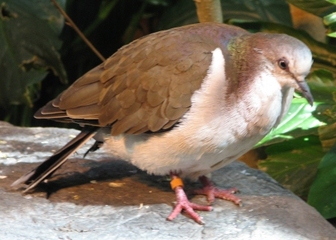Caribbean Dove

The Caribbean Dove is classified as Least Concern. Does not qualify for a more at risk category. Widespread and abundant taxa are included in this category.
The Caribbean Dove (Leptotila jamaicensis) is a species of bird in the Columbidae family. It is found in the Cayman Islands, Colombia (San Andrés island), Honduras (Bay Islands), Jamaica and Mexico (Yucatán Peninsula). It has been introduced to New Providence in the Bahamas. Its natural habitats are subtropical or tropical dry forests, subtropical or tropical moist lowland forests, and heavily degraded former forest. More
The Caribbean Dove (Leptotila jamaicensis) is a species of bird in the Columbidae family. pets No caribbean dove pets yet! pictures No caribbean dove pictures yet! videos No caribbean dove videos yet! owners No caribbean dove owners yet! blogs No caribbean dove blogs yet! This article is licensed under the GNU Free Documentation License. More
song bout, I found that Caribbean Doves repeat their song every 11 seconds (N = 30 songs from two individuals), although Howell and Webb (1995) suggest every seven to nine seconds. Singing Behaviour: It was seldom that I heard a lone Caribbean Dove sing; they typically countersang with neighbours (usually >25 meters apart) in long bouts throughout the early morning from high within the canopy. More
Caribbean Dove Leptotila jamaicensis = Described by: Linnaeus (1766) Alternate common name(s): White-bellied Dove, Ground Dove, Jamaican Dove, White-fronted Dove, White-bellied Dove Old scientific name(s): None known by website authors Photographs Jamaica - Apr, 2001 More
Caribbean Dove Leptotila jamaicensis = Jamaica - Apr, 2001 More
The Caribbean Doves I've seen (Jamaica & Bahamas) have shown a rather distinct darker "cinnamon" nape and upper back which does not appear to be the case in the photos posted. Also, while Caribbean Doves do also have white tail tips, I believe they're much smaller than on the bird in the photos from Florida. A more difficult species to separate from White-tipped is Gray-headed (Leptotila plumbeiceps). More

Family : Columbidae
Genus : Leptotila
Species : jamaicensis
Authority : (Linnaeus, 1766)

